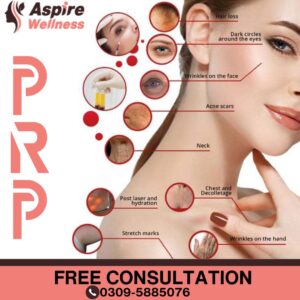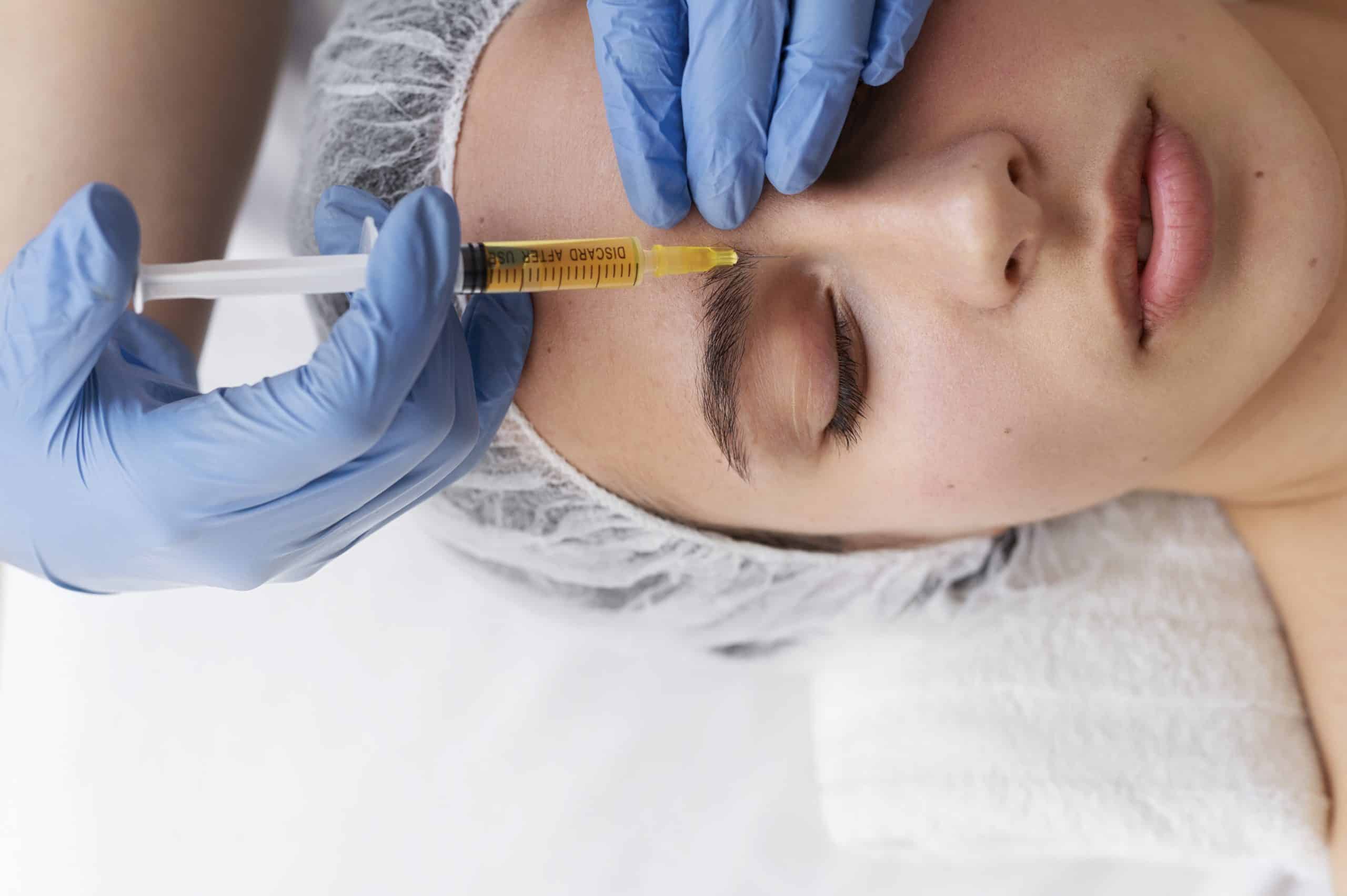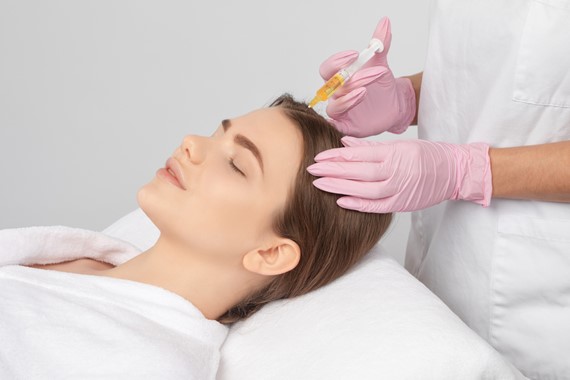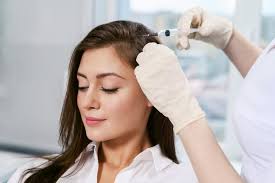Introduction: Unlock the Secret to Youthful Skin
When it comes to skin rejuvenation, many people automatically think of Botox or fillers as the go-to solutions. However, there’s a natural, minimally invasive option that’s been gaining traction in the skincare world: PRP skin rejuvenation. Despite its growing popularity, some still believe that platelet-rich plasma (PRP) treatments are only for athletes recovering from injuries or for those seeking hair restoration. But PRP isn’t just for your joints or scalp—it’s a powerful tool in the fight against aging and skin imperfections.
PRP skin rejuvenation uses the body’s own natural healing powers to restore youthful glow, reduce wrinkles, and even out skin tone. It’s an innovative approach to skincare that’s taking the beauty industry by storm, and in this blog, we’re going to dive deep into what PRP skin rejuvenation is, how it works, and why it might be the perfect solution for you.
What is PRP Skin Rejuvenation?
Platelet-Rich Plasma (PRP) is a therapy that involves using a person’s own blood to treat various skin and hair issues. The process begins with a blood draw, which is then placed in a centrifuge. The centrifuge spins the blood, separating the plasma (which is rich in platelets) from other components like red and white blood cells. The resulting plasma is injected into the skin or applied topically after micro needling to stimulate collagen production, rejuvenate skin, and promote healing.
In the context of skin rejuvenation, PRP works wonders by harnessing the healing abilities of your blood platelets. These platelets are packed with growth factors, which can stimulate the skin’s natural healing response. As a result, PRP skin therapy can help reduce fine lines and wrinkles, improve skin texture, and encourage the production of new collagen. This makes it one of the most natural, non-invasive treatments for a glowing complexion.
You might have heard PRP referred to as the “vampire facial.” While the name might sound a little eerie, the process itself is anything but. PRP is simply a natural way to rejuvenate your skin without relying on chemicals or synthetic fillers. Instead, your body’s healing mechanisms do the hard work of restoring your skin’s youthful appearance.
How Does PRP Skin Rejuvenation Work?
The magic behind PRP skin rejuvenation lies in the process itself. Here’s a quick breakdown of how it works:
-
Blood Draw: The first step is simple—a small amount of blood is drawn from your arm, just like any standard blood test.
-
Centrifugation: The blood is placed in a centrifuge, which spins it at a high speed to separate the red blood cells from the plasma. What you’re left with is the platelet-rich plasma, which is the key ingredient for skin rejuvenation.
-
Application of PRP: The PRP facial treatment is then applied to the skin either through micro needling or direct injection. In micro needling, tiny needles create microchannel in your skin, allowing the platelet-rich plasma to penetrate deeper and promote collagen production.
-
Collagen Stimulation: Once the PRP is in the skin, the growth factors begin to work their magic. Over time, the increased collagen production helps to reduce fine lines, improve skin elasticity, and give you smoother, more youthful-looking skin.
The beauty of PRP for skin rejuvenation lies in its ability to tap into your body’s natural healing processes. Instead of relying on foreign substances or chemicals, PRP works with your body’s own resources to improve skin health. Not only does this make the treatment more natural, but it also reduces the risk of side effects or allergic reactions, as the plasma is derived from your own blood.
Key Benefits of PRP Skin Rejuvenation
If you’ve been on the hunt for a skin rejuvenation treatment that delivers natural, long-lasting results, PRP skin rejuvenation might be exactly what you need. Whether you’re aiming to fight the signs of aging, improve your skin texture, or target specific skin concerns, PRP has proven to be a game-changer. Let’s explore some of the key benefits that make platelet-rich plasma therapy an effective option for those seeking smoother, more youthful-looking skin.
1. Reduction of Wrinkles and Fine Lines
The number one reason many people turn to PRP skin rejuvenation is to combat wrinkles and fine lines—the inevitable signs of aging. As we age, our skin naturally loses collagen, which leads to sagging and the formation of wrinkles. PRP works by stimulating the body’s production of collagen, which helps to smooth out wrinkles, restore volume, and tighten the skin.
When PRP is injected into areas with fine lines and wrinkles, such as around the eyes, mouth, or forehead, it helps regenerate healthy tissue and encourages the skin to renew itself. The results are natural and subtle, providing a smoother, more youthful appearance without the need for invasive procedures like facelifts or Botox.
2. Improved Skin Texture and Tone
Another fantastic benefit of PRP skin therapy is its ability to enhance overall skin texture and tone. Whether you have uneven skin texture due to acne scars, sun damage, or simply the natural aging process, PRP works wonders in making your skin appear smoother and more radiant.
The PRP treatment triggers the body’s healing response, helping to create new, healthier skin cells. Over time, this results in a more even skin tone, with fewer blemishes, dark spots, or patches. It also helps to reduce skin discoloration and hyperpigmentation, giving your complexion a healthy, uniform glow.
3. Minimizes Acne Scars and Hyperpigmentation
If you’ve struggled with acne scars or hyperpigmentation, PRP could be your skin’s new best friend. Acne scars, particularly the deep ones, can be challenging to treat with topical creams or over-the-counter solutions. PRP offers a natural and effective way to minimize their appearance.
When PRP is applied to areas with acne scars, it helps stimulate collagen production and accelerates skin repair, smoothing out the skin surface and reducing scar visibility. Additionally, PRP therapy can address the dark spots left by acne, helping to fade the pigmentation and leave your skin with a more balanced tone.
PRP is a powerful alternative to harsher treatments like chemical peels or laser therapy. It works gently, with minimal risk of irritation or side effects, making it ideal for people with sensitive skin.
4. Skin Firmness and Elasticity Boost
With age, skin begins to lose its firmness and elasticity, which contributes to sagging and drooping. One of the incredible benefits of PRP skin rejuvenation is its ability to restore skin firmness and elasticity.
By stimulating collagen production, PRP works to rebuild the structural support of the skin, making it feel firmer and more lifted. This can be especially beneficial in areas prone to sagging, like the cheeks, jawline, and under-eye area. The result? A rejuvenated, youthful appearance without the need for invasive surgery or fillers.
5. Collagen Production for a Youthful Glow
At the core of PRP skin rejuvenation is its ability to promote collagen production. Collagen is the protein responsible for keeping our skin firm, plump, and youthful. As we age, collagen production naturally slows down, leading to thinner, more fragile skin. PRP stimulates the production of new collagen fibers, which not only restores volume but also enhances skin texture and smoothness.
The result is that your skin begins to glow, as though it’s been revitalized from the inside out. For those looking to regain that youthful radiance, PRP skin therapy is an excellent way to achieve it naturally and without relying on harsh chemicals or synthetic products.
How Long Does PRP Skin Rejuvenation Take to Show Results?
One of the most common questions people ask when considering PRP skin rejuvenation is, “How soon will I see results?” It’s understandable to be eager to see the effects of your treatment, especially when you’re investing in a procedure that promises smoother, more youthful skin.
Initial Results
After your PRP skin treatment, you may notice some immediate improvements. This can include a slight glow to your skin or a subtle smoothing of fine lines. However, these early signs are typically temporary and are mainly due to the initial effects of the treatment, like increased blood circulation.
Full Results Timeline
To truly see the full benefits of PRP rejuvenation, you’ll need to be patient. Collagen production is a slow process, and it can take anywhere from 3 to 4 weeks for your skin to begin showing more noticeable improvements.
Generally, after about 3 months, the effects of PRP skin rejuvenation will be fully visible. By this time, the collagen in your skin will have started to regenerate, and you’ll see a noticeable reduction in fine lines, wrinkles, and uneven skin tone. For more stubborn concerns like acne scars or hyperpigmentation, it may take a few additional treatments to achieve the best possible outcome.
Safety, Side Effects, and Risks of PRP Skin Rejuvenation
As with any skincare treatment, it’s important to understand the safety, potential side effects, and risks of PRP skin rejuvenation. Fortunately, one of the main selling points of PRP therapy is its natural and non-invasive nature. Since it uses your body’s own blood, the risk of allergic reactions or serious side effects is significantly lower than with other treatments that involve foreign substances.
Safety
Because PRP uses your blood, it’s considered a safe treatment for most people. There’s no risk of rejection or allergic reaction since the plasma used for the treatment is your own. It’s also free from synthetic chemicals, which makes it an excellent option for those with sensitive skin.
Common Side Effects
While PRP is generally very safe, like any procedure, there are some temporary side effects that might occur:
-
Redness and swelling at the injection site (typically resolves within a few hours to a day)
-
Bruising in the treated area (more common in areas where the skin is thinner)
-
Slight irritation or a feeling of tightness in the treated area
-
Mild itching or dryness (which can be alleviated with moisturizing)
Serious Risks
Serious risks associated with PRP skin rejuvenation are rare but can occur if the procedure is done improperly. To minimize the chances of complications, always ensure you are working with a qualified and experienced practitioner. If you have any specific health concerns or conditions (such as blood disorders), consult with your doctor beforehand to ensure PRP is safe for you.
Conclusion: Is PRP Skin Rejuvenation Worth the Investment?
In conclusion, PRP skin rejuvenation is an effective and natural treatment option for anyone looking to reduce the signs of aging, improve skin texture, or address specific skin concerns like acne scars or hyperpigmentation. With minimal downtime, a low risk of side effects, and a range of impressive benefits, PRP has quickly become a popular choice in the world of non-invasive skin rejuvenation.
While the cost of PRP skin rejuvenation may seem high initially, the long-lasting results and natural benefits often outweigh the price tag. Additionally, with the right practitioner and a little patience, you’ll begin to see improvements within weeks and enjoy smoother, healthier-looking skin for months to come.
If you’re considering PRP for skin rejuvenation, it’s essential to consult with a qualified professional who can guide you through the process and help you decide if it’s the right treatment for you. Keep in mind that regular treatments and proper aftercare will help you maintain your results and keep your skin looking its best for years.
Ready to give your skin the boost it deserves? PRP might be the rejuvenation solution you’ve been searching for.




